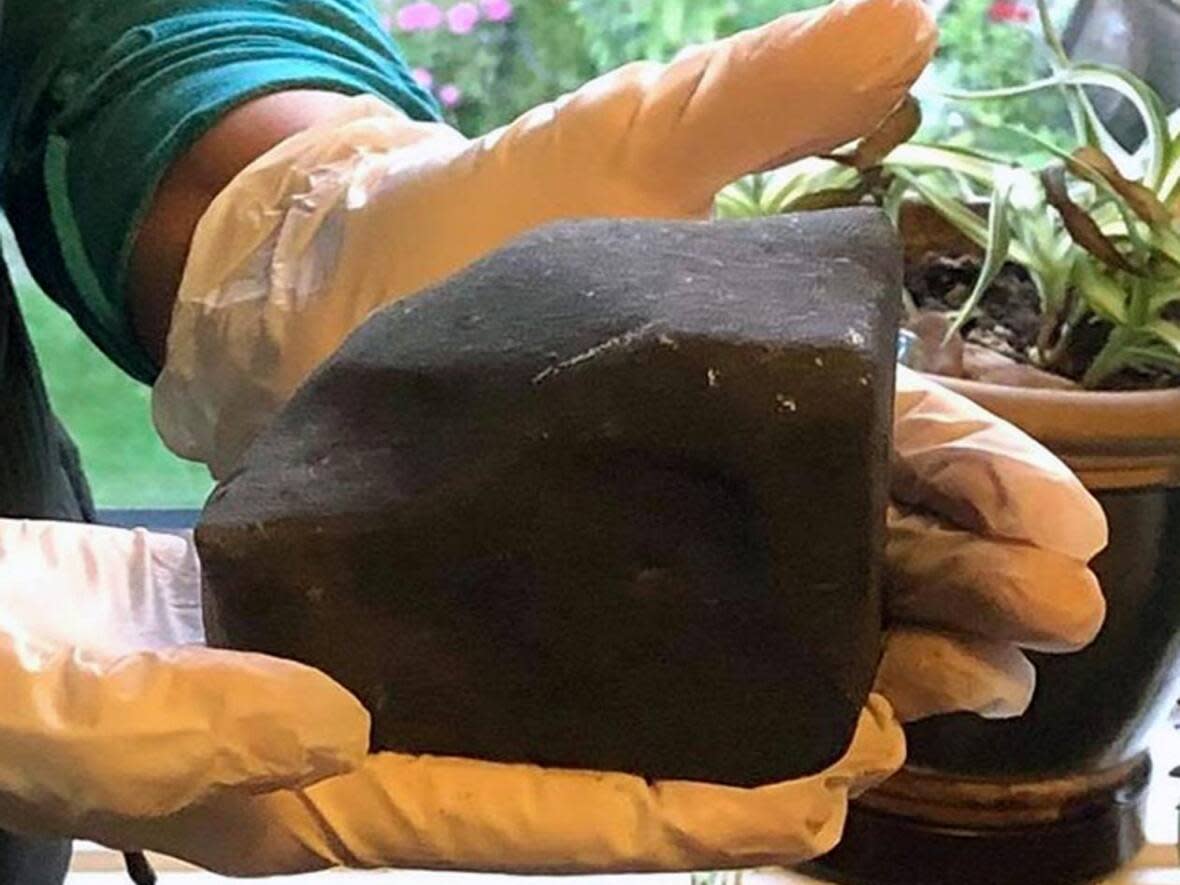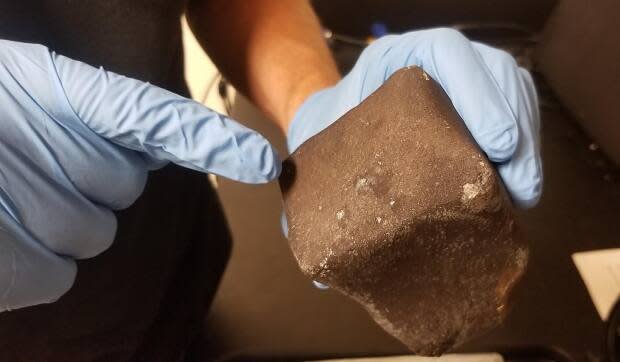Western scientists study meteorite made famous after crashing into B.C. woman's bedroom

A meteorite that ripped through a roof and landed inches from a B.C. woman's head is believed to be around 470 million years old, Western researchers say.
Ruth Hamilton of Golden, B.C. was woken abruptly on the night of Oct. 3, when the small charcoal grey rock the size of a melon broke through her ceiling and landed between her floral pillowcases.
After coming to terms with the surreal experience, she lent the rock to Western University's physics and astronomy department in London, Ont., where researchers are working to map its orbital journey around the sun before it arrived in Hamilton's bedroom.
"It was very exciting getting it because any time you see a new meteorite, it's kind of like Christmas Day," said adjunct professor Phil McCausland, who leads the investigation.

Upon inspection, McCausland found that the meteorite is an L chondrite, one of the most commonly found types of meteorites to fall on Earth.
What's not so common about Hamilton's meteorite is where it originates in the sky.
"This rock has a very interesting and unusual orbit," said McCausland.

"Chondrite meteors are thought with good evidence to have come from the early solar system, but they went through a major asteroid breakup event. So there is a big body in the asteroid belt that broke up about 470 million years ago," he said.
"From then, a bunch of material has been delivered around the inner solar system, some of it arriving on Earth. And this, prospectively, is one of those pieces."
McCausland said so far, the orbits of only a handful of L chondrite meteors are known.
"What happens out in space is that the cosmic rays interact with the rock and end up irradiating it, so that it has somewhat activated isotopes that decay over time," he said. "We can detect what the decay products are that are coming out of this, the gamma rays and so on. And that gives us a handle on the orbital history of the rock."
He added that researchers are looking to dash cam and surveillance footage, as well as local photographers who captured the fireball event, to reconstruct the rock's flight path.
Under Canadian law, the meteor is owned by its finder - in this case, Ruth Hamilton. It's hers to sell, donate, or keep.
Meanwhile, McCausland will ensure a sample is registered with the Meteoritical Society, where it will be available for future scientific research.

 Yahoo Movies
Yahoo Movies 
